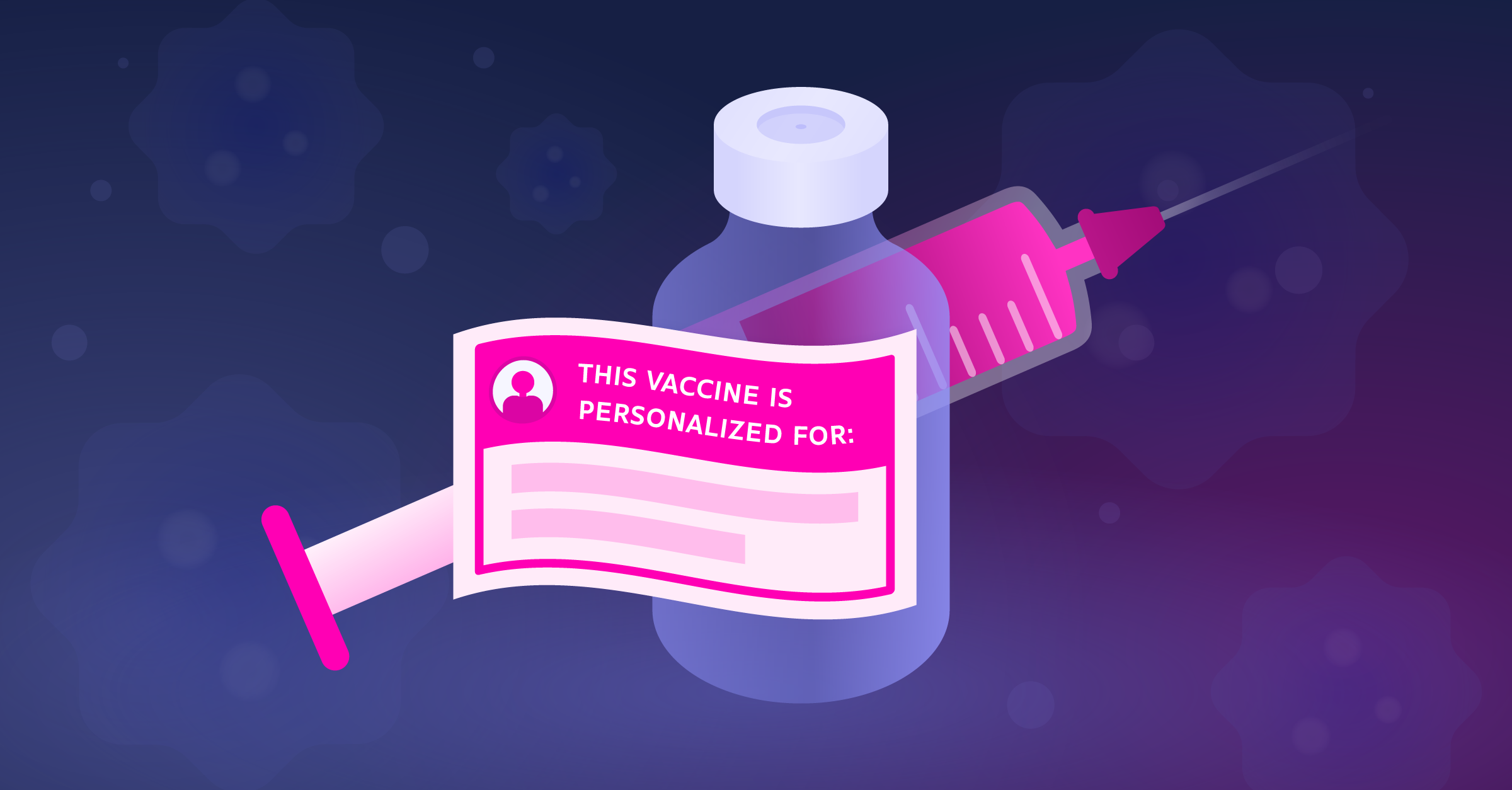The Vaccine Development Landscape and Its Associated Challenges
Explore the hurdles and challenges associated with vaccine development

Vaccines have consistently demonstrated their efficacy in protecting people from infectious diseases. This led to the eradication of smallpox and polio – two debilitating diseases that historically caused global epidemics. Yet, the recent COVID-19 pandemic highlighted the obstacles that are inherent today in the development of vaccines. Let’s take a deeper dive into these challenges.
Target Identification
The first step in vaccine development is to uncover the structure of the target pathogen. This process involves identifying specific epitopes, such as polysaccharides or glycoproteins located on the pathogen's surface or within its structure. These epitopes serve as the primary targets for the immune system, triggering a response that protects against future infection. However, the identification of optimal vaccine epitopes is often challenging due to the diversity and complexity of pathogens. For instance, the influenza virus is notorious for its ability to undergo antigenic drift, accumulating mutations in its surface proteins that can render existing vaccines less effective.
To overcome these challenges, researchers have utilized cutting-edge technologies like cryo-electron microscopy, which was instrumental in elucidating the structure of the SARS-CoV-2 spike glycoprotein, and high-throughput omics approaches. These tools enable the precise identification of the pathogen's 3D structure and genetic makeup, allowing for the design of more effective and targeted vaccines.
Vaccine Formulation
After identifying the target antigen, the next challenge is to formulate a vaccine that is effective and shelf stable. This involves adding various compounds, such as stabilizers, preservatives, and adjuvants.
Stabilizers play a crucial role in maintaining the vaccine's potency and integrity throughout its shelf life. They prevent the active ingredients from degrading or losing their effectiveness due to factors like temperature fluctuations or exposure to light. Sugars, such as sucrose are common stabilizers in many vaccines. For example, the measles, mumps and rubella vaccine contains sorbitol and sucrose to protect the live attenuated viruses from damage during storage and transport.
Preservatives are incorporated into vaccines to inhibit the proliferation of bacteria and minimize the risk of contamination. Thimerosal, an organic mercury compound, was once widely used as a preservative but has been largely phased out of childhood vaccines due to concerns about its safety. Today, 2-phenoxyethanol is a common preservative in some vaccines, like the polio vaccine, where it can cause cell death of bacteria by disrupting the integrity of its plasma membrane.
Adjuvants are substances added to vaccines to enhance the immune response. Aluminum salts, are widely incorporated into vaccines, including the diphtheria and tetanus vaccines. They work by decreasing the solubility of the vaccine, which sustains the release of the drug and prolongs the immune response. Currently, new adjuvants, such as lipid nanoparticles used in some COVID-19 mRNA vaccines, are being explored for their potential to enhance the magnitude and duration of the immune response.
Vaccine Approval Process
The journey of vaccine development, from laboratory discovery to patient administration, can span up to 15 years. It commences with preclinical studies in animal models to assess safety and immunogenicity, followed by three phases of human clinical trials. Phase I focuses on safety and dosage in a small group, Phase II evaluates efficacy and immune response in a larger cohort, and Phase III definitively establishes effectiveness in preventing disease among thousands of participants around the globe.
Even after a vaccine is approved and distributed, the pharmaceutical industry's responsibility does not end. Phase IV trials, also known as post-market surveillance studies, continue to monitor the vaccine's safety and effectiveness in the real world. These studies involve larger populations and timeframes than the previous phases, providing crucial insights into long-term effects, rare adverse events, and the vaccine's effectiveness in different subpopulations.
In 2021, after the Johnson & Johnson COVID-19 vaccine was authorized for emergency use, rare cases of thrombosis with thrombocytopenia syndrome (a serious blood clotting disorder), were reported. This led to a temporary pause in the vaccine's use while investigations were conducted. Although the vaccine was ultimately reinstated with updated warnings and recommendations, it highlights how phase IV surveillance can uncover rare adverse events and lead to modifications in a vaccine's use or labeling.
This long clinical trial process, while essential, can present an approval bottleneck in pandemic or disease outbreak scenarios. Tools like accelerated approval pathways and rolling reviews can expedite vaccine availability in public health emergencies. The Ebola vaccine, for example, underwent an accelerated development process, with trials conducted in multiple countries simultaneously to expedite its availability during the 2014-2016 outbreak in West Africa.
Vaccine Manufacturing, Distribution, and Cost
Scaling up production to meet global demand is a significant logistical hurdle. Establishing adequate manufacturing infrastructure and ensuring the proper transport of temperature-sensitive vaccines are additional challenges. For example, the Pfizer COVID-19 vaccine’s ultra-cold storage requirement of -70°C posed significant logistical challenges for distribution in developing countries with limited infrastructure. Research and development of vaccines can cost hundreds of millions to billions of dollars. For example, the development of the Ebola vaccine took approximately five years and cost over $500 million.
This can create disparities in vaccine access, particularly for low- and middle-income countries. Initiatives like Gavi, the Vaccine Alliance, play a crucial role in ensuring equitable access to vaccines for all, regardless of socioeconomic status. By pooling resources and negotiating with manufacturers, Gavi helps to reduce vaccine costs and improve access in developing nations, where 822 million children have been vaccinated since its inception in 2000.
Vaccine Hesitancy and Effective Scientific Communication
The COVID-19 pandemic has brought vaccine hesitancy to the forefront, with misinformation about safety and efficacy impacting vaccination rates. A Kaiser Family Foundation survey conducted in December 2020 found that 39% of respondents were either hesitant or would not get vaccinated against COVID-19, with misinformation about side effects and concerns about the speed of vaccine development being major drivers of hesitancy.
Effective communication strategies are crucial to address these concerns and educate the public on vaccine safety. One example was the UK government's Every Vaccination Gives Us Hope campaign during the COVID-19 pandemic. This utilized media channels to reach different demographics and emphasized personal stories and the community to build trust and address public concerns. Some governments and organizations are investing in digital tools and platforms to combat misinformation and improve vaccine communication. The World Health Organization's Vaccine Safety Net initiative, provides a platform for reliable vaccine safety information, while social media monitoring and rapid response teams are deployed to counter misinformation and address vaccine-related concerns in real-time.
Vaccines of the Future – Personalized Vaccines
Despite the success of traditional vaccines in eradicating and controlling numerous infectious diseases, some limitations remain. One major challenge is the variability in individual immune responses, leading to differing levels of protection and potential adverse reactions. Personalized vaccines offer a solution to this issue by tailoring vaccine design to an individual's unique genetic and immune profile.
Researchers are investigating the use of tumor extracellular vesicles (TEVs) as personalized cancer vaccines. TEVs are small vesicles (50-100nm) that are naturally shed by tumor cells, carrying a variety of tumor-specific antigens and immunomodulatory molecules. By isolating and purifying TEVs from an individual's tumor, a personalized vaccine can be created that triggers a targeted immune response against the patient's unique tumor profile.
Big Picture
While the challenges are numerous and complex, the progress made in vaccine development, particularly during the COVID-19 pandemic, offers a glimpse into a future where personalized vaccines and innovative technologies could revolutionize disease prevention. With continued investment in research and global collaboration, we can continue to overcome the obstacles that hinder vaccine development and ensure equitable access to these life-saving interventions.
Stay informed by signing up for our newsletter, where you'll gain early access to the latest insights, trends, and breakthroughs in drug discovery, powered by cutting-edge data and analysis from industry-leading experts.
